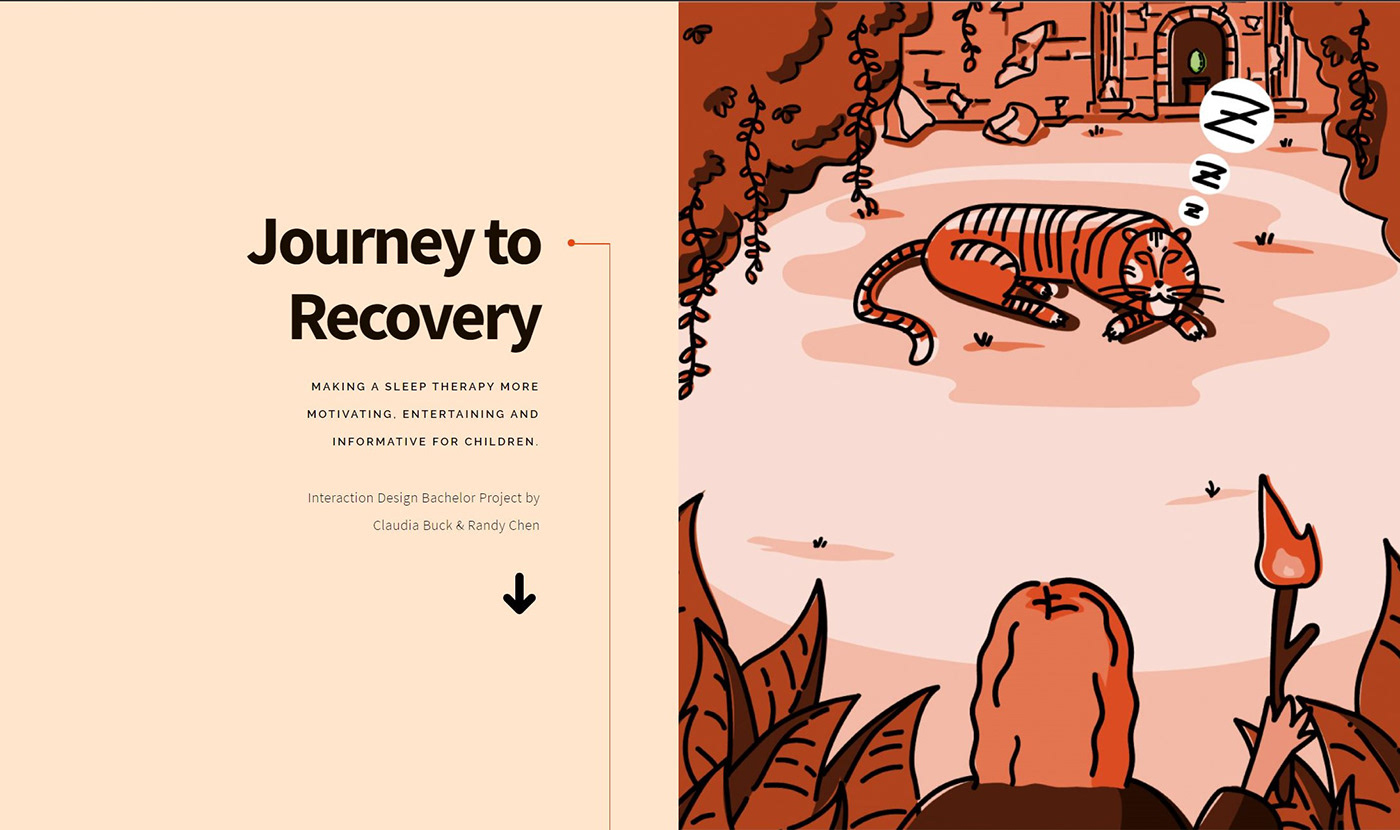
About
In a medical treatment that improves the quality of sleep, children lose interest as the therapy proceeds. Each day, they face tedious and repetitive tasks. Our solution creates a child-friendly experience, using a captivating story to motivate, entertain and educate children along their journey.
We collaborated with a research team from ETH Zurich and the University of Zurich, called SleepLoop. SleepLoop intends on improving sleep of people in various stages of life from childhood to old age with the help of their mHealth head wearable. While sleeping, the sleep device tracks the brain activity and emits an auditory tone right when the brain’s neurons are synchronised. This stimulus leads to patients having a deeper and thus higher quality of sleep.
Team: Randy Chen & Claudia Buck
Visit our Website: journey-to-recovery.ch
Field Research - Who are we designing for?
Parallel to preparing for the classroom workshops, we developed cultural probes with the intention of handing them out to the children we were visiting in class. This research tool should help us to learn more about their personalities, skill levels, daily lives and environments. In particular, we included questions and tasks related to the context of sleep.








Evaluate - User Journey

Usertest and Self-Experience



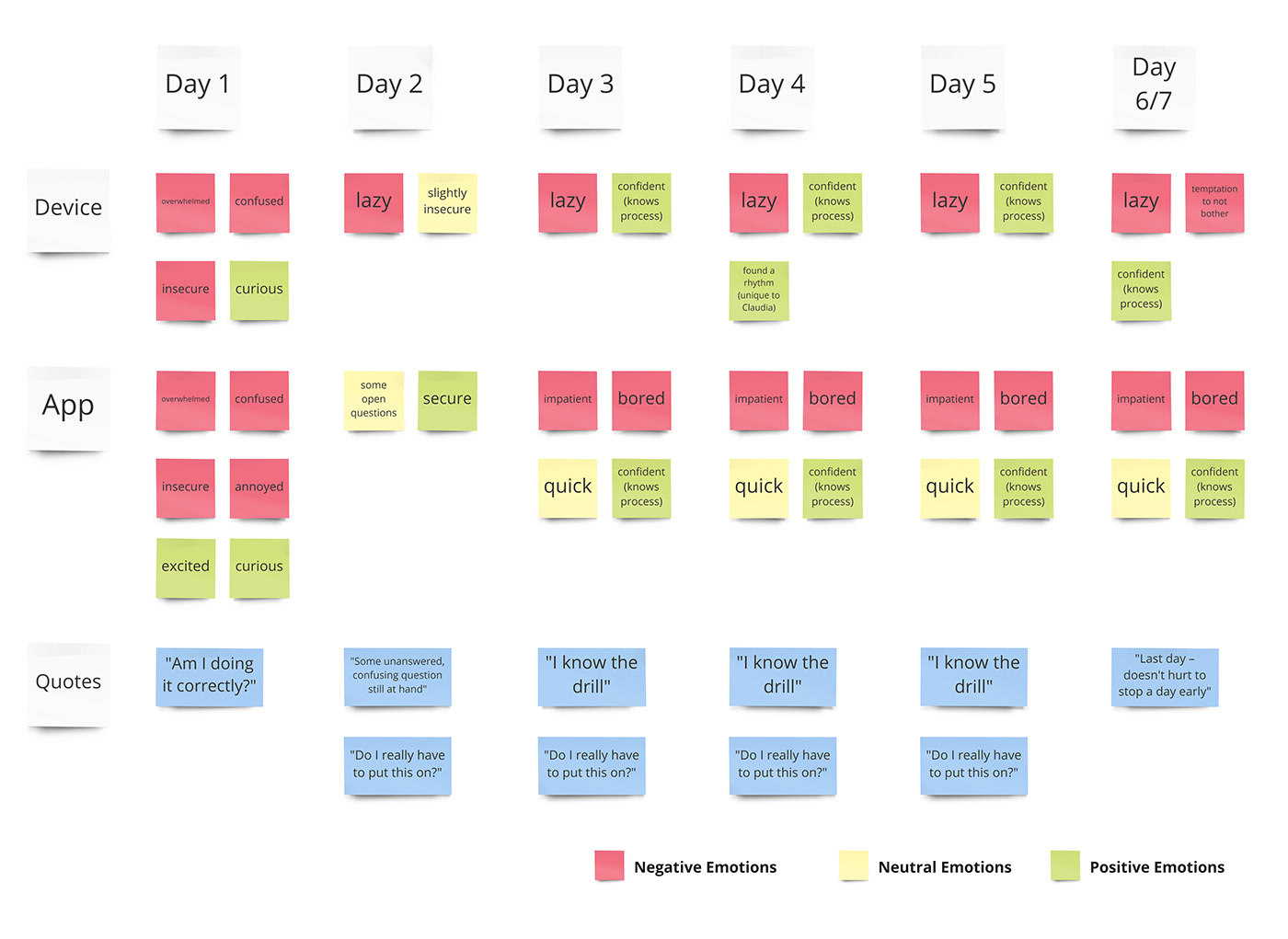
Workshop - Design Sprint!
With SleepLoop we organized a workshop based on Design Thinking methods and the Sprint methodology to identify priorities and to generate initial ideas. With the children, we brainstormed playful storylines and creative content for the app.





Final Concept - Key Decision
Each evening, the patient child can go on an narrative adventure in which they travel to a jungle where they meet a great tiger; climb a mountain amidst a snowstorm or explore a dreamless world.
These narrative evening chapters are intended to foster motivation as a form of unpredictable, variable rewards. As such, the child can look forward to the next time they need to put on the sleep device.
These narrative evening chapters are intended to foster motivation as a form of unpredictable, variable rewards. As such, the child can look forward to the next time they need to put on the sleep device.

Information Architecture
We set up a user flow and the information architecture of the app. We had find a balance
between the content necessary for medical treatment and the content that was intended to entertain. We found it important to uphold the seriousness of the treatments and its tasks and to not make it too playful.
between the content necessary for medical treatment and the content that was intended to entertain. We found it important to uphold the seriousness of the treatments and its tasks and to not make it too playful.

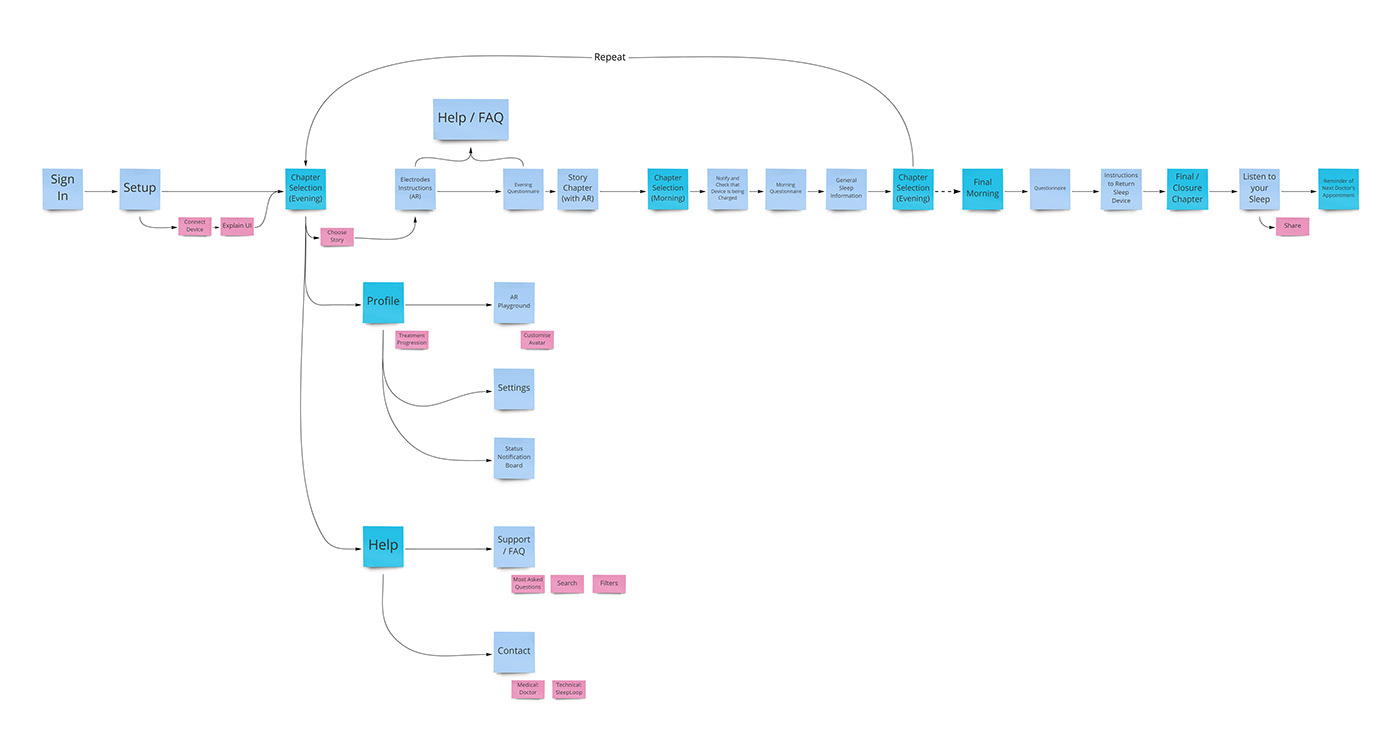
Design Concept and Design Language
Most importantly the design should be appealing to children from 8-12. It should be fun and easy to understand. We went through several iterations before reaching the final designs. As such, for the home screen we explored how to visually differentiate between the evening and the morning chapters. Ultimately, we took inspiration from the celestial paths of the moon and sun to act as a toggle switch.


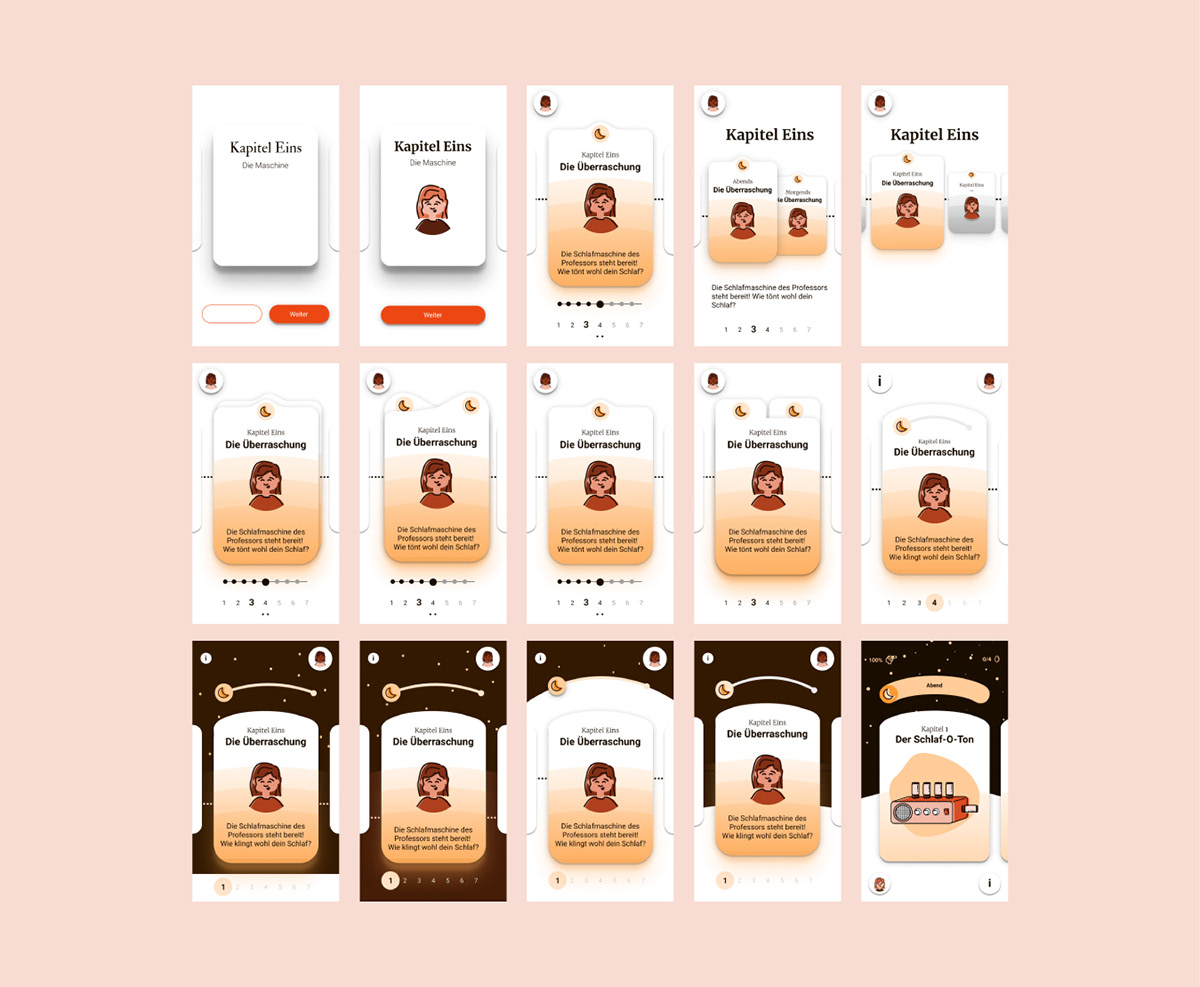
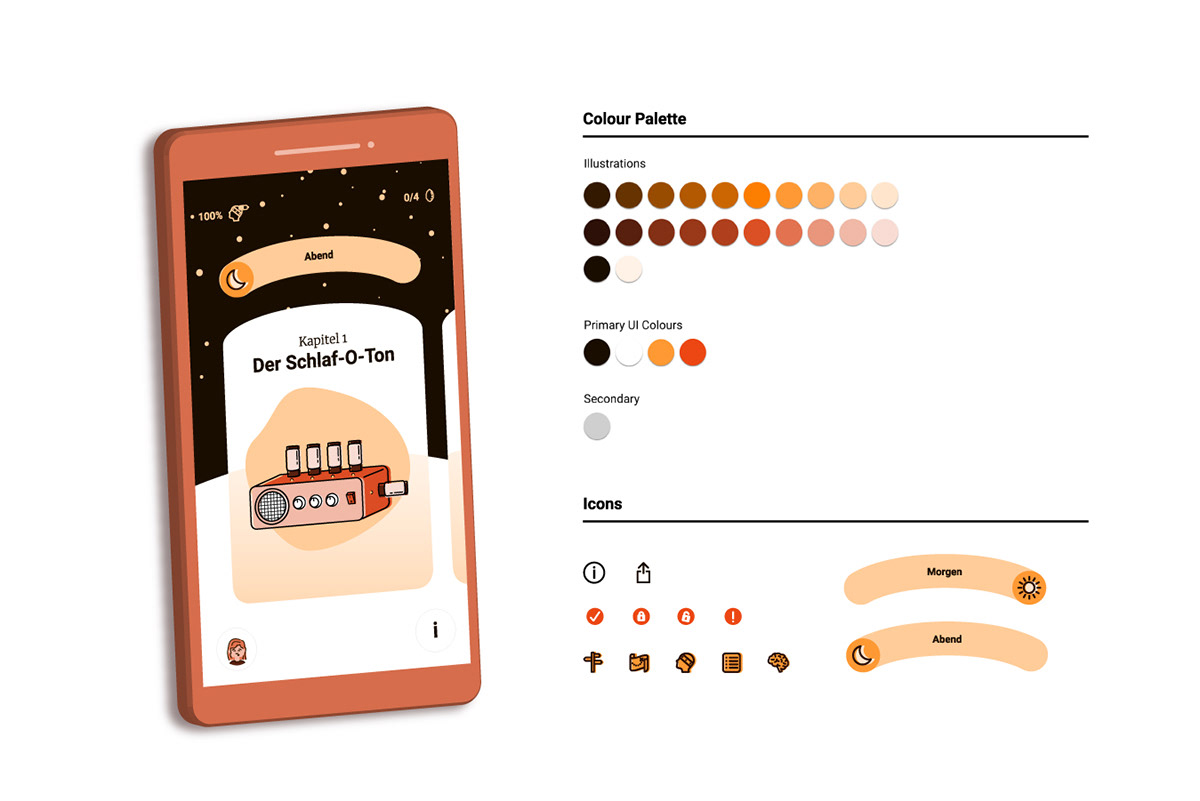
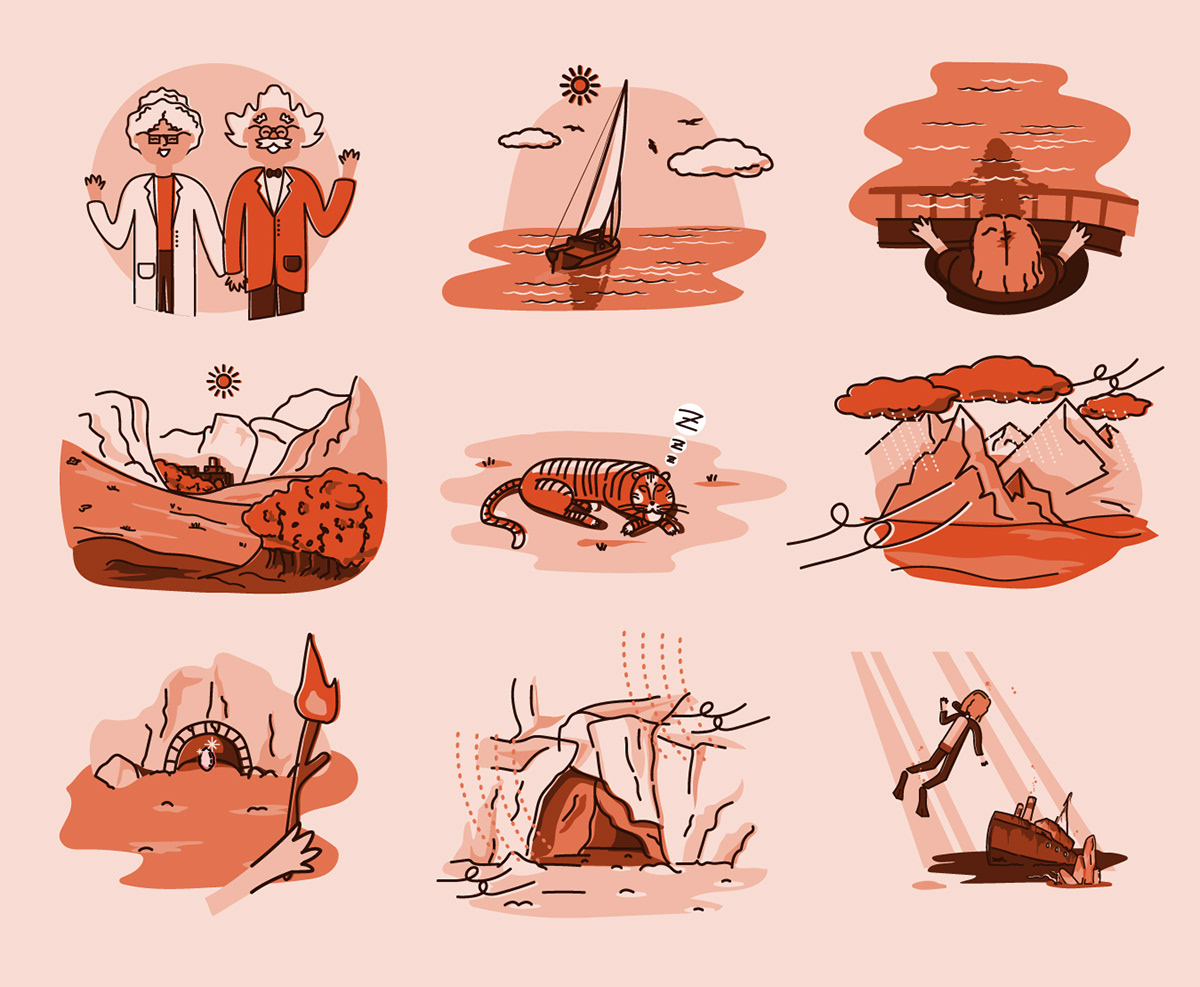
Augmented Reality Feature
By using Augmented Reality, we are guiding the patient to put on the sleep device correctly by indicating where to place the electrodes.
Furthermore, we have added Augmented Reality within the story in order to create a more immersive experience. As such, they will need to choose a costume in order to trick the great tiger or dive underwater.
Furthermore, we have added Augmented Reality within the story in order to create a more immersive experience. As such, they will need to choose a costume in order to trick the great tiger or dive underwater.




Final Prototype









